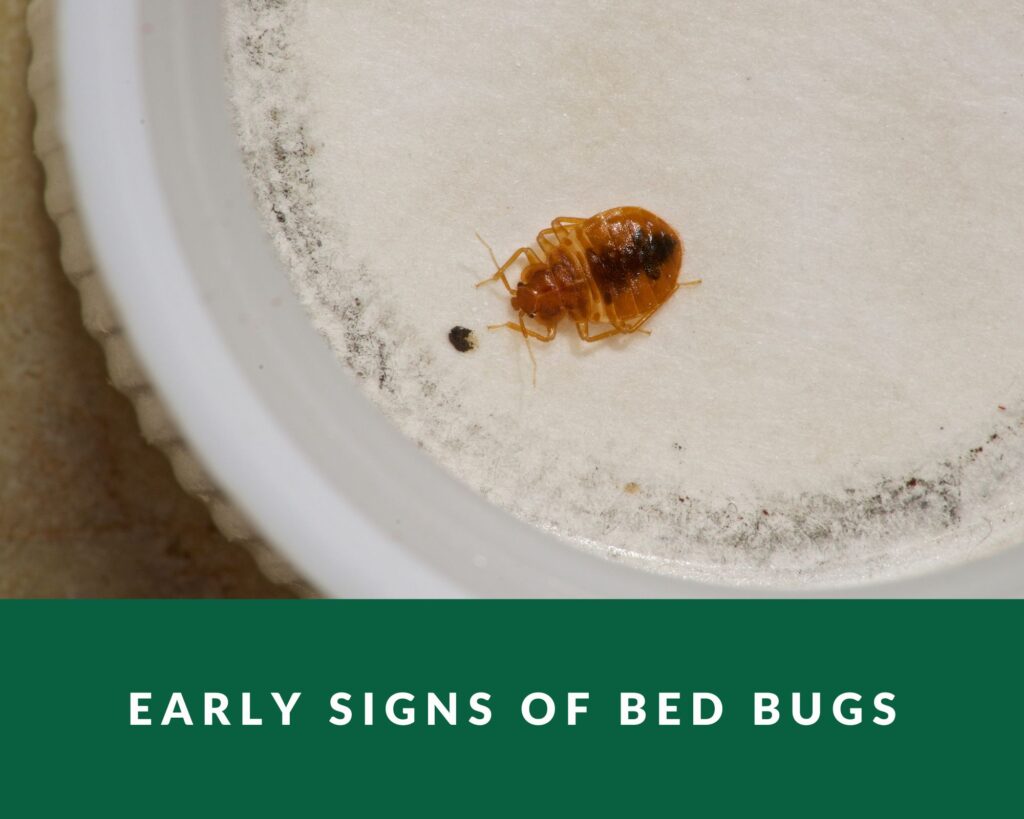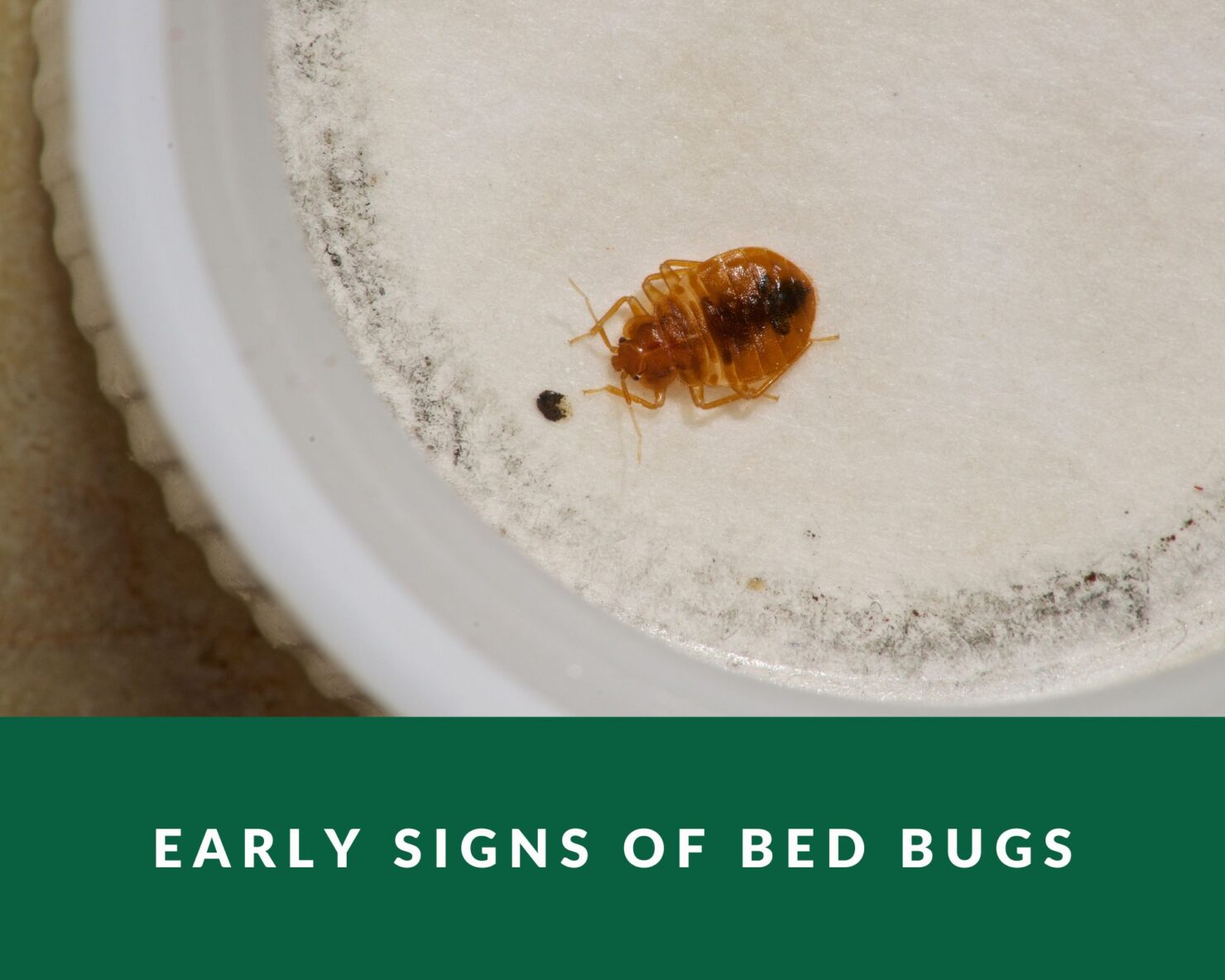
Early signs of bed bugs
The appearance of most bugs doesn’t precisely enthuse people, but the thought of bedbugs in particular can induce a particularly severe terror.
Bedbug infestations have forced the temporary closure of clothing retailers and prompted many homes to seek professional help to get rid of the critters.
One may contend that the damage the bugs do is more psychological than physical. Although the bites can be uncomfortable, they don’t seem to spread any diseases.
Nevertheless, they prowl in our bedrooms, the most sacred place in our houses, and let us know they’re there by biting us.
Furthermore, they are notoriously difficult to remove once inside. People who have had bedbugs may experience similar emotional trauma symptoms, according to a tiny study.
What bed bugs look like
Bed bugs can occasionally be misidentified as fleas, roaches, carpet beetles, or other common household insects. Bed bug nymphs are smaller and lighter in color than adults but otherwise look much like them.
Unlike fleas, bed bugs cannot fly or jump, yet they may move swiftly across floors, walls, ceilings, and other surfaces.
The life cycle of bed bugs
The female bed bug lays 200–500 eggs (in clusters of 10–50) during her life cycle on rough surfaces like paper or wood. Within ten days of being covered with glue, eggs hatch.
There are five nymphal stages that get bigger as they get older, and each stage molts to the next after having one blood meal.
It might take anything from 5 weeks to 4 months for bed bugs to complete their entire lifespan from egg to adult. Adults can live for up to ten months.
A blood meal is all that is needed for each stage to molt into the following nymph stage, which is what is more precisely meant by the term “gradual metamorphosis,” which describes how they will develop in size.
The bed bugs mature after the sixth stage. The length of the complete life cycle can range from five weeks to four months, depending on the climate and the availability of food sources.
Bedbug adults can live for anything between 12 and 18 months. The maximum number of eggs a female can lay in her lifetime is 500. She will reproduce as long as she is able. In the same location where they shelter, they deposit eggs.
Early Signs of Bed Bugs
These bed bug warning signals are listed in order of how definite each one can indicate that bed bugs are present, particularly early in an outbreak.
Bites
Being bitten by a bed bug is undoubtedly one of the first indications that you have an issue because bed bugs feed on blood. Where the skin is most exposed, such as the arms, legs, back, neck, and hands, bites frequently occur.
A cluster, a straight line, or a zigzag pattern of bed bug bites may appear on certain persons all at once. It’s critical to pay attention to any strange bites you spot or feel so you can identify any potential issues.
Symptoms of bed bug bites
The typical signs of bed bug bites include itching, red or swollen welts, a faint burning sensation, and blistering. Blisters could signify a severe allergic reaction if you have them.
Since mosquitoes often leave identical signs, not everyone who has been bitten may experience these symptoms, making it possible that they are not all due to bed bugs.
Odour
A musty smell emanates from bed bugs, especially from huge populations of them. A pungent scent is released by bed bugs while they feed.
Due to the blood in the feces, after they have been fed, it has a coppery tang. If the smell of mustiness is your sole worry, you might not actually have a bed bug infestation because other bugs also produce a musty smell.
Bloodstains
Bloodstains on your covers are yet another early bed insect indicator. There are a few causes for these stains, including:
- There may still be some blood on your skin after the bug has bitten you and moved on. It goes without saying that this can rapidly migrate to your linens.
- You may end up crushing an insect as a result of turning or shifting positions. The blood stain is the result of the bug’s incomplete digestion of your blood, which allowed some of it to leak into your linens.
Fecal marks
They are substantially smaller and darker than the bloodstains we previously mentioned. These tiny, dark dots have the appearance of an ink dot on the tip of a pen or marker.
Their size ranges from two to four times that of the period at the conclusion of this sentence. Bed bug excretions, which are made of digested human blood, are what cause fecal markings.
The digested blood has a dark brown or black appearance and, due to the iron it contains, will emit a light, rusty odor that adds to the overall disagreeable scent of a bed bug infestation.
Feces from bed bugs can be found anywhere, including on bed sheets, mattresses, headboards, walls, curtains, and other surfaces. They are typically in great numbers around bed bug hiding places.
Eggs
The eggs laid by pregnant female bed bugs range from 1 to 7 every day, and they usually hatch 7 to 10 days later. Bed bug eggs are ovular in shape, around 1-millimeter length or shorter, and pearly white in color. They look like rice grains that have been reduced to the size of a pinhead.
To the unaided eye, the bed bug eggs are scarcely discernible. They are roughly one to one and a half millimeters long when they break out of the egg stage. So, are bed bugs visible? The reason is that they are challenging to identify at an early stage.
Shell casings
Before reaching full maturity, bed bugs typically go through five phases of their lifespan. As the bed bugs mature toward adulthood, they shed their exoskeletons during those cycles, which causes the shells to vary in size.
Check crevices, seams, under your mattress, and any other tiny spaces where bed bugs might feel at home because the shells are frequently restricted to locations where bed bugs hatch and breed.
Living or dead bed bugs
In areas with significant infestation, you could find either living or dead bed bugs.
The majority of the time, bed bugs hide in shadowy areas like under mattresses, in cracks and holes, on walls, or behind pictures, loose wallpaper, and so on.
What Next?
Knowing the early signs of bed bugs will allow you to take proactive measures to get rid of them before they take over your home. Pay attention to any little egg clusters, reddish stains, and strong odors, as well as any abrupt, unexpected bites.
We are a call away if you wish to schedule a free inspection or learn more about our services.

